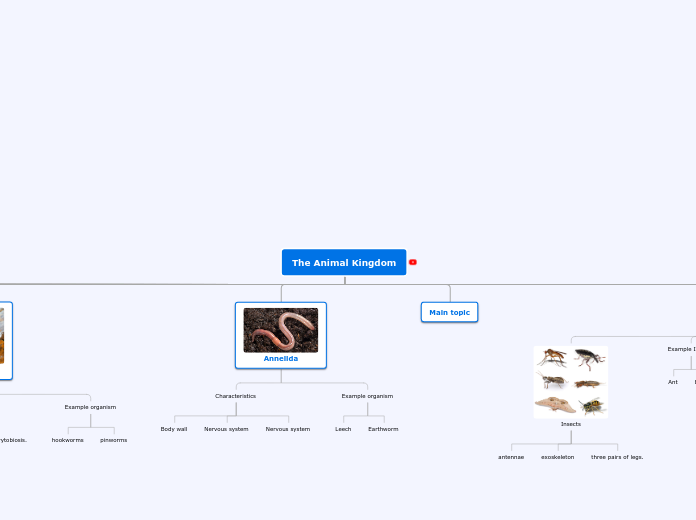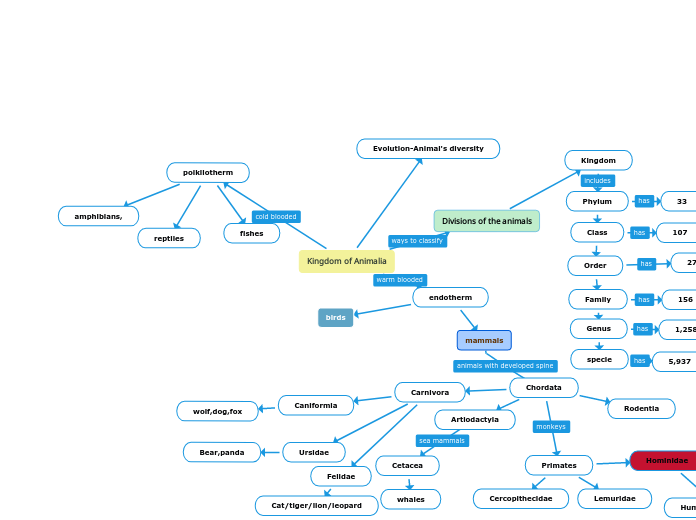Chordata
Olfactores
Verbrata
Gnathostomata
Subtopic
Chondrichthyes
Elasmobranchii
Selachimorpha
Lamniformes
Otodontidae
Otodus
O. megalodon
Placodermi
Arthrodira
Eubrachythoraci
Pachyosteomorphi
Dunkleosteoidea
Dunkleosteus
Osteicthyes
Sarcopterygii
Tetrapoda
Amniota
Sauropsida
Eureptilla
Romeriida
Diapsida
Neodiapsida
Icthyosauromorpha
Icthyosauriformes
Icthyoterygia
Eoicthyosauria
Icthyosauria
Merramiosauria
Shatasauridae
Shonisaurus
Euicthyosauria
Parvipelvia
Thunnosauria
Icthyosaurus
Sauria
Lepidosauromorpha
Lepidosauria
Squamata
Toxiofera
Anguimorpha
Paleoanguimorpha
Varanidae
Mososauroidea
Mososauridae
Tylosaurinae
Tylosaurus
Mososaurinae
Mosasaurini
Mosasaurus
Sauropterygia
Eosauropterygia
Nothosauroidea
Nothosauria
Nothosauridae
Nothosaurus
Pistosauria
Plesiosauria
Pilosauridae
Thalassophonea
Liopleurodon
Brauchaucheninae
Kronosaurus
Attenborosaurus
Plesiosauroidea
Plesiosaurus
Cryptoclida
Xenopsaria
Elasmosauridae
Euelasmosaurida
Elasmosaurinae
Elasmosaurus
Styxosaurus
Archelosauria
Testudines
Cryptodira
Protostegidae
Archelon
Archosauromorpha
Crocopoda
Archosauriformes
Eucrocopoda
Avematatarsalia
Ornithodira
Pterosauria
Macronychoptera
Dimorphodontoidea
Dimorphodon
Novialoidea
Breviquartossa
Pterodactylomorpha
Monofenestrata
Pterodactyliformes
Caelidracones
Anurognathidae
Anurognathinae
Jeholopterus
Pterodactyloidea
Lophocratia
Eupterodactyloidea
Ornithocheiroidea
Tapejaroidea
Dsungaripteridae
Dsungaripterus
Azhdarchoidea
Tapejaraomorpha
Tapejaridae
Tapejarinae
Tapejarini
Tapejara
Azdarchomorpha
Azdarchidae
Quetzalcoatlinae
Thanatosdrakon
Quetzalcoatlus
Pteranodontoidea
Pteranodontia
Nyctosauromorpha
Aponyctosauria
Nyctosauridae
Barbaridactylus
Pteranodontidae
Geosternbergia
Pteranodon
Ornithocheriomorpha
Lancedontia
Anhangueria
Ornithocheirae
Anhangueridae
Cearadactylus
Maaradactylus
Ornithocheridae
Tropeognathus
Dinosauromorpha
Dinosauriformes
Dracohors
Dinosauria
Ornithschia
Genesauria
Thyreophora
Stegosauria
Huayangosauridae
Huayangosaurus
Chungkingosaurus
Stegosauridae
Gigantspinosaurus
Kentrosaurus
Stegosaurinae
Stegosaurus
Wuerhosaurus
Ankylosauria
Nodosauridae
Polacanthinae
Polacanthus
Nodosaurus
Sauropelta
Ankylosauridae
Minmi
Ankylosaurinae
Crichtonosaurus
Ankylosaurini
Ankylosaurus
Description
Famed for its clubbed tail and the armor plates that cover its back, Ankylosaurus is a genus of Ankylosaurus that lived around 70m years ago during the Late Cretaceous period. Ankylosaurus’ protective osteoderms and robust build – the average specimen weighs 8 tons and is 9.6m in length - defend it from predators such as Tyrannosaurus rex, while its large stomach digested up to 60kg of ferns and shrubs every day.
Discovery
Ankylosaurus was discovered in the Hell Creek Formation, Montana by Barnum Brown, four years after the famous paleontologist, known as ‘Mr. Bones’, had discovered Tyrannosaur rex. The first fossils found were a collection of bones including two teeth and a skull fragment, although Brown actually unearthed numerous osteoderms in 1900, but incorrectly attributed them to Tyrannosaurus. Further Ankylosaurus fossils were found in Canada in 1910, including a complete skull.
Paleoecology
Ankylosaurus lived in Canada and the western United States, which had a warm, humid climate at that time, and preferred to stay close to rivers, forests and wetlands, allowing them to cool off during hotter periods.
Euoplocephalus
Neoornithischia
Cerapoda
Ornithopoda
Iguanodontia
Rhabdodontomorpha
Muttaburrasaurus
Dryomorpha
Dryosauridae
Dryosaurus
Ankylopollexia
Styracosterna
Iguanodon
Hadrosauroidea
Ouranosaurus
Hadrosauromorpha
Hadrosauridae
Saurolophoidae
Lambeosaurinae
Tsintaosaurini
Tsintaosaurus
Parasaurolophini
Parasaurolophus
Lambeosaurini
Olorotitan
Corythosaurus
Saurolophinae
Brachylophosaurini
Maiasaura
Edmontosaurini
Edmontosaurus
Marginocephalia
Pachycephalosauria
Pachycephalosauridae
Homalocephale
Dracorex
Stygimoloch
Pachycephalosaurus
Ceratopsia
Neoceratopsia
Microceratus
Coronosauria
Ceratopsoidea
Ceratopsidae
Centrosaurinae
Nasutoceratopsini
Nasutoceratops
Sinoceratops
Eucentrosaura
Centrosaurini
Styracosaurus
Pachyrhinosaurini
Pachyrostra
Pachyrhinosaurus
Chasmosaurinae
Chasmosaurus
Pentaceratops
Triceratopsini
Torosaurus
Triceratops
Chimeridae
Chimerispinoidea
Stegosaurus x Triceratops
Stegoceratops
Spinosaurus x Sinoceratops
Spinoceratops
Spinosaurus x Velociraptor
Spinoraptor
Diplodocus x Ankylosaurus
Ankylodocus
Eoindominae
Scorpios Rex
Indominini
Indominus Rex
Indoraptor
Saurischia
Herrerasauridae
Herrerasaurus
Eusaurischia
Sauropodomorpha
Bagualosauria
Massopoda
Sauripodoformes
Sauropoda
Eusauropoda
Mamenchisauridae
Mamenchisaurus
Neosauropoda
Diplodocoidea
Rebbachisauridae
Nigersaurinae
Nigersaurus
Dicraesauridae
Amargasaurus
Amargasaurus is named after the site of its discovery, La Amarga Formation in Argentina, and is an herbivorous dinosaur of the Dicraeosauridae family weighing around 2.9 tons and spanning 9.5m in length. Its long neck and sharp teeth allow it to eat tough vegetation from trees, while the two rows of long spines on its neck and back help Amargasaurus to defend itself from predators – an important characteristic given that this dinosaur has poor hearing and is unable to move at high speeds.
The discovery of Amargasaurus came in 1984, when José Bonaparte led a team in excavating a near-complete skeleton from the sedimentary rocks of La Amarga Formation. Despite numerous attempts to unearth more, Bonaparte’s discovery is the only Amargasaurus fossil on record.
Amargasaurus lived in the Early Cretaceous period around 120-130 million years ago, and existed alongside other Sauropods including Amargatitanis and Zapalasaurus, as well as Stegosaurus. It lived in groups among the woodlands and creeks of South America, migrating regularly in search of food.
Diplodocidae
Apatosaurinae
Apatosaurus
Description
At over 20m in length and around 20 tons, Apatosaurus is one of the largest dinosaurs ever to have existed. This herbivorous Sauropod has a long neck that allows it to feed on the leaves of tall trees as well as lower-hanging plants, while the tip of its tail can be whipped to produce a loud bang that scares off predators.
Discovery
Apatosaurus was discovered in 1877, when Othniel Charles Marsh unearthed a near-complete skeleton in the Rocky Mountains, Colorado. Its name, which translates to ‘deceptive lizard’, stems from Marsh’s initial misconception that its bone structure was that of an aquatic reptile.
Paleoecology
Fossils dating back to the late Jurassic Period (approximately 150 million years ago) have been found across the western United States and parts of Europe. The location of these findings have led researchers to believe that Apatosaurus lived near rivers, and co-existed with Camarasaurus, Ceratosaurus and the feared Allosaurus.
Diplodocinae
Diplodocus
Macronaria
Camarasauridae
Camarasaurus
Titanosauriformes
Brachiosauridae
Brachiosaurus
Titanosauria
Dreadnoughtus
Eutitanosauria
Saltasauroidea
Saltasauridae
Opisthocoelicaudiinae
Alamosaurus
Theropoda
Neotheropoda
Coelphysoidea
Coelophysisidae
Segisaurus
Coelphysis
Cryolophosaurus
Dilophosaurus
Averostra
Ceratosauria
Neoceratosauria
Ceratosauridae
Ceratosaurus
Abelisauroidea
Abelisauridae
Carnotaurinae
Majungasaurus
Brachyrostra
Carnotaurini
Carnotaurus
Tetanurae
Carnosauria
Monolophosaurus
Allosauroidea
Metriacanthosauridae
Metriacanthosaurinae
Metriacanthosaurus
Allosauria
Allosauridae
Allosaurus
Allosaurus is one of the most fearsome dinosaurs ever to have roamed the earth, weighing up to two tons and measuring around 12m in length. The apex predator of the Late Jurassic period, Allosaurus’ enormous skull contains rows of large, serrated teeth for tearing flesh, while its long, powerful tail helps it to balance.
The first official discovery of Allosaurus fossils came in 1877, when Othniel Charles Marsh found fragments of an unknown dinosaur in Colorado. At the time, the fossils were so unlike any previously found dinosaur bones that Marsh named it Allosaurus, meaning ‘different lizard’. Two years later, more fossils were unearthed by H. F. Hubbell, although the quality of the near-complete skeleton was not realized until 1908, after Cope had died. With thousands of fossils emerging in the intervening years, Allosaurus fossils are now among the most commonly discovered dinosaur bones.
Allosaurus lived around 150 million years ago in the forests and floodplains of the western United States, most notably Utah and Colorado. It co-existed with many other species of dinosaur, feeding mostly on large herbivores such as Stegosaurus and Apatosaurus.
Carcharodontosauria
Concavenator
Carcharodontosauridae
Acrocanthosaurus
At around 12m in length and more than six tons in weight, Acrocanthosaurus is one of the largest theropods and dates back to the Early Cretaceous period. This carnivorous dinosaur gets its name – which translates to ‘high-spined lizard’ – from the elongated spines running the length of its neck and back, while its sharp teeth and powerful jaw make it a fearsome predator comparable to the much more well-known Tyrannosaurus rex.
Acrocanthosaurus was officially discovered in 1950 by J. Willis Stovall and Wann Langston Junior in Atoka County, Oklahoma, when the two paleontologists dug up skeleton fragments including part of a skull. In the following decades there was little consensus on how to classify Acrocanthosaurus, and at various times it was believed to be a species of Allosaurus, Spinosaurus and Megalosaurus - but it is now considered part of the Carcharodontosaurus family.
Fossil findings have confirmed that Acrocanthosaurus lived approximately 110-125 million years ago in the Southern states of the USA, most notably Texas, Oklahoma and Wyoming. Acrocanthosaurus was the apex predator of its time, with a diet consisting of other dinosaurs including Sauropelta, Tenontosaurus, Deinonychus and various sauropods.
Carcharodontosaurinae
Carcharodontosaurus
Giganotosaurini
Giganotosaurus
Megalosauridae
Megalosaurus
Spinosauridae
Baryonchinae
Ceratosuchopsini
Suchomimus
Baryonyx
Spinosaurinae
Spinosaurus
Avetheropoda
Coelosauria
Megaraptora
Megaraptoridae
Australovenator
Tyrannoiraptora
Compsognathidae
Sinosauropteryx
Compsognathus
Tyrannosauroidea
Proceratosauridae
Proceratosaurus
Yutyrannus
Pantyrannosauria
Moros
Eutyrannosauria
Tyrannosauridae
Albertosaurinae
Albertosaurus
A relative of the infamous Tyrannosaurus rex, Albertosaurus is a carnivorous theropod from the Late Cretaceous period. Believed to have been the apex predator of its time, Albertosaurus’ rows of razor-sharp teeth make light work of the smaller, herbivorous dinosaurs it preys on, while its sheer size – approximately 9.5m long and weighing around 4 tons – ensure other predators steer clear.
Albertosaurus’ name is derived from the location of its earliest discoveries – Alberta’s Horseshoe Canyon Formation. In 1884 a partial skull was excavated by geologist Joseph B. Tyrrell, and five years later his colleague Thomas Chesmer Weston found another, although the fossils were originally classified as being part of the existing Laelaps incrassatus species. It was finally established as a new species and named in 1905, by American paleontologist Henry Fairfield Osborn.
Further discoveries along the floodplains of Horseshoe Canyon have led researchers to believe that Albertosaurus lived approximately 70 million years ago, living alongside a wide array of other dinosaurs including Saurolophus, Edmontosaurus and Troodon.
Tyrannosaurinae
Alioramini
Qianzhousaurus
Tyrannosaurini
Tarbosaurus
Tyrannosaurus
sus
Maniraptoriformes
Ornithomimosauria
Macrocheriformes
Ornithomimidae
Garudimimidae
Archaeornithomimus
Struthiomimus
Gallimimus
Deinocheridae
Deinocherius
Maniraptoria
Therizinosauria
Therizinosauroidea
Therizinosauridae
Therizinosaurus
Pennraptora
Oviraptorosauria
Caenagnathoidea
Caegnathidae
Gigantoraptor
Oviraptoridae
Oviraptorinae
Oviraptor
Paraves
Eumaniraptoria
Deinonychosauria
Dromeosauridae
Pyroraptor
Eudromeosauridae
Saurornitholestinae
Atrociraptor
Dromaeosaurinae
Utahraptor
Velociraptorinae
Deinonychus
Velociraptor
Troodontidae
Troodon
Synapsidia
Eupelycosauria
Sphenacodontia
Therapsida
chainosauria
Dicynodontia
Lystrosaurus
Sphenacodontidae
Sphenacodontinae
Dimetrodon









